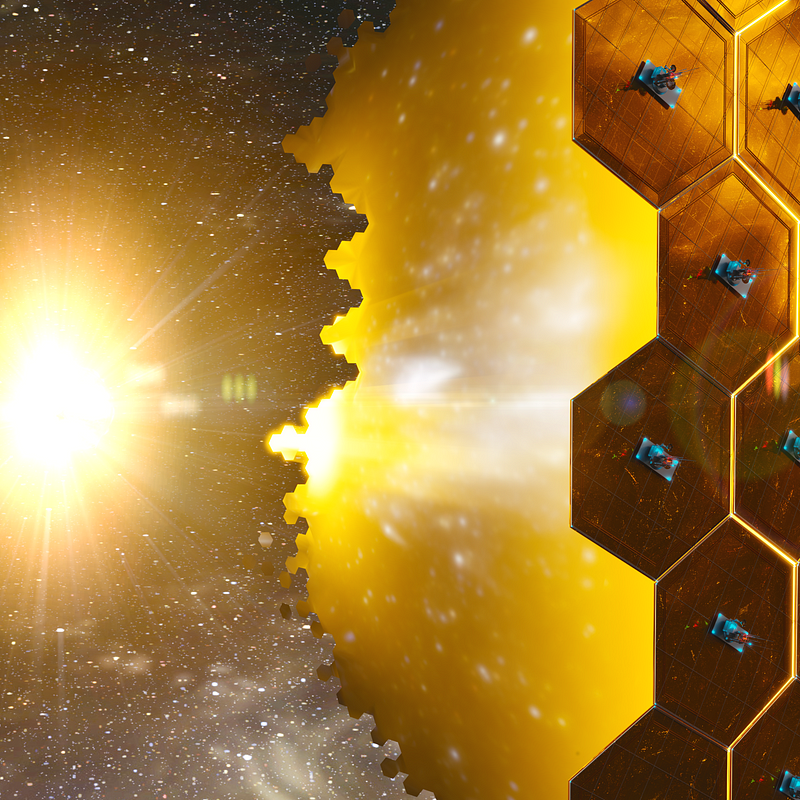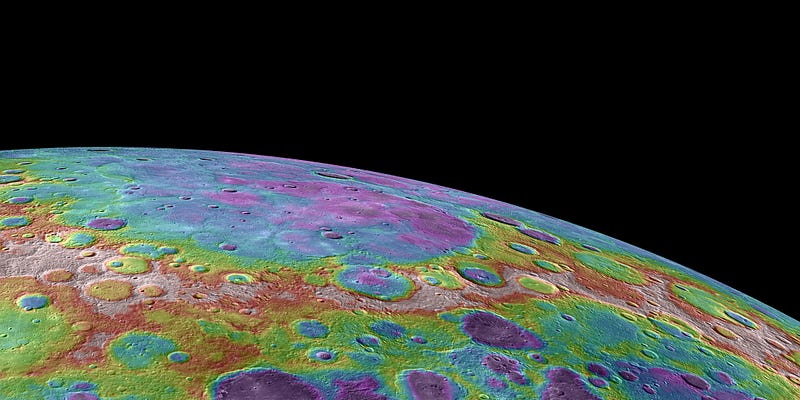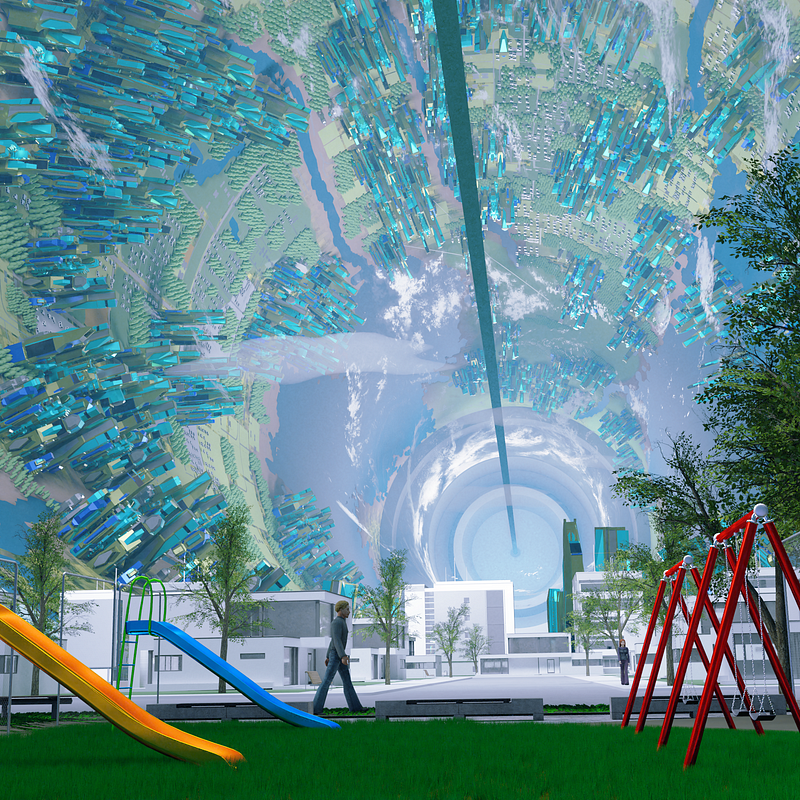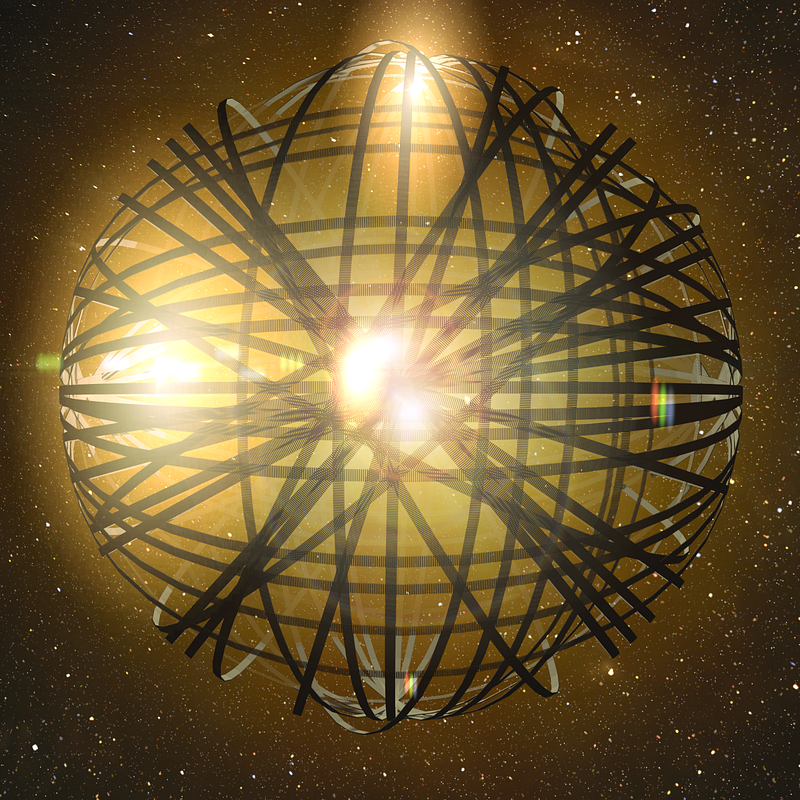Exploring the Untapped Potential of Our Sun and Beyond
Written on
Earth is merely a tiny speck in the vast expanse of space, especially when juxtaposed with the enormity of the sun. This stellar body is 1.3 million times larger than our planet and produces, in just one second, energy equivalent to nearly 500,000 times the total energy consumed by humanity in a year.
While we are aware that the sun's atmosphere generates solar storms, has a hot corona that expels immense plasma, and emits significant radiation, few recognize its high metallicity. The sun contains a staggering amount of elements heavier than helium, with a mass in metals, carbon, nitrogen, silicon, and oxygen that is thousands of times that of Earth (approximately 5,842 quintillion tons). These materials could serve as vital resources for humanity.
Although these figures may seem incomprehensible, the potential they represent could liberate humankind from its terrestrial confines, paving the way for a spacefaring civilization capable of housing quintillions of individuals and launching massive colony ships into the cosmos.
“We plan to use Static Satellites, or Statites, hovering above the sun in a balance between gravity and solar wind. Each Statite is an ultralight hexagonal sail over a kilometer wide that reflects light back to the sun. Together, millions of Statites will create a large curved mirror, directing focused light onto a specific area — similar to a magnifying glass — to heat it. The solar wind will transport essential elements like carbon and metals to us, which we will capture and sort using mass-spectrometer discriminators.” — Excerpt from my novel K3+

With a shift away from immediate gratification towards a more long-term vision, we can undertake the monumental task of making space accessible for all of humanity.
Harvesting Space Resources
Space resources are nearly limitless, yet accessing them often contradicts the principles of our short-term profit-driven system. In our era, projects that lack profitability within a decade are seldom pursued.
During the European colonization of the New World, settlers arrived equipped only with tools and knowledge, as resources were abundant. In contrast, the challenges of space colonization are significantly greater, making it impossible for leaders like Cortés to destroy their ships to prevent retreat.
To harvest resources from space, we require massive infrastructure. Even as rocket launch costs decline, this infrastructure must be constructed in space using resources that are not yet accessible, creating a paradox. However, with generational thinking and less focus on instant rewards, we can achieve the incredible feat of making space open to humanity. The key may lie in lessons learned long ago, like those from our first campfire.
Starting with matches, we ignited small twigs, allowing the flame to grow until it could consume entire logs. In this analogy, rockets are the matches, while raw materials from the moon and near-Earth asteroids are the twigs.
With these resources, we can begin establishing initial infrastructure in Earth's orbit, far above the debris clouds traveling around our planet at 17,000 mph. After a few decades, we could develop mining equipment to target larger resources.
Extracting materials from our sun will not be easy, inexpensive, or fast, but the potential rewards are unimaginable.

The Swift Messenger of the Ancient Gods
Venturing beyond Mars requires more energy than solar cells can provide. While the TV series The Expanse has stirred excitement about asteroid mining, it remains true that solar energy diminishes significantly as we move outward in the solar system, necessitating fuel for mining equipment and transporting mined materials back.
Mercury, composed of 70% metals and 30% silicates, stands as an enormous and more accessible mining site, rich in energy due to its proximity to the sun. This proximity makes it ideal for powering automated mining and refining operations. Mercury’s resources could lead to the establishment of space factories, heavy machinery, and even the first permanent colonies in space.
Its low gravity is suitable for a Mass Driver—a magnetic catapult that, while requiring significant energy, could efficiently transport refined materials back to Earth's orbit.
The first resource extraction from the sun's vicinity will also bring humanity closer to achieving a Kardashev Type II civilization—potentially the first in our galaxy.
“While reaching Mercury is challenging…from Earth, once in space, the fuel needed to reach Mercury and land is minimal. Moreover, Mercury is the remnant core of a past collision, meaning we won’t need to dig deep to find ores. This simplifies the mining aspect of our infrastructure.” — Excerpt from my novel K3+

The Sun's Abundant Riches
Harvesting materials from our sun will pose its own challenges, yet the potential benefits are beyond what we can currently fathom. Individual atoms circulating within the sun's atmosphere, propelled by its convective processes, will need to be captured, sorted, and assembled into larger chunks for use in 3D printers and other construction technologies.
Fortunately, various star lifting concepts that utilize the sun's power to extract heavy elements exist—akin to stellar aikido. Additionally, this process may reduce the sun's mass, prolonging the time before it becomes a red giant that could obliterate the inner solar system, including Earth.
With a mass of metals and carbon thousands of times greater than Earth, we could construct numerous space colonies to accommodate more inhabitants than all the habitable worlds in the Milky Way combined.

As launch costs continue to decrease, we will be able to build megastructures such as skyhook tethers, further minimizing the expenses associated with transporting people and cargo into space.
Leaving Humanity's Cradle Behind
Within a century of Mercury generating a substantial influx of raw materials, we could begin constructing the first O’Neill cylinders. These massive rotating habitats, envisioned by physicist Gerard O’Neill in the 1970s, would simulate Earth's gravity and could each house millions of residents.
Current closed-loop systems for recycling air and water can be scaled for use in space colonies, enabling the extraction of essential nutrients for food production.
We are already cultivating meat, fish, poultry, dairy, and even pork products in vitro from cultured cells, eliminating the need for raising animals. By the time we embark on building our first O’Neill cylinder, we could produce tastier food without traditional agriculture.
While rotating habitats may seem as alien to us as cities did to our cave-dwelling ancestors, these colonies can provide a diverse range of living environments—from bustling urban centers to serene rural landscapes.

Two vacuum tubes connecting the cylinders would allow rapid travel between settlements, making hyperloop systems seem as outdated as 19th-century steam trains. Each tube would feature multiple rails to accommodate varying speeds and distances, facilitating passenger and cargo movement.
As rocket costs continue to decline, we will be able to build launch-assist megastructures, such as skyhook tethers, making it easier to transport people and goods to space. This will enable a significant migration from Earth to space colonies.
Both utopian and dystopian futures are intrinsically tied to resource availability. Given humanity's evolution in a resource-scarce environment, tendencies toward greed, hoarding, and aggression are hardwired into our nature.
Is the Sun the Final Destination for Human Greed?
As we dream of transforming Mars into a second Earth, the sun possesses enough resources to construct a Dyson swarm of rotating habitats capable of accommodating quintillions of people in optimal Earth-like conditions, establishing the Solar System as a landmark in the galaxy.

Once, Dyson megastructures seemed distant and impractical, but now we have the majority of technologies required to begin such projects. The challenge lies in our collective will, as many halted or scaled-back megaprojects illustrate.
Both utopian and dystopian societies are closely related to resource management. As humans evolved in scarcity, the question arises: will access to virtually limitless resources lead to a post-scarcity society or a space-age feudal system perpetuated by resource abundance? How will we address basic needs when some have far more than they can use?
These questions are complex and challenging. Many hold hope that necessity and time will lead to a transformation in humanity. Yet, I find myself growing skeptical.
Our species faces an unprecedented challenge, a self-inflicted wound we struggle to heal, as those in power maintain control over civilization. I am uncertain whether we can find the means to unite and overcome this affliction, especially when our ability to communicate is compromised.
What Lies Ahead for Humanity?
My latest dystopian novel K3+ narrates the story of Earth's decline and humanity's emergence as an intergalactic empire. It serves as a guide for navigating our current dystopia, colonizing space, and ensuring humanity's survival, blending scientific elements with captivating fiction.